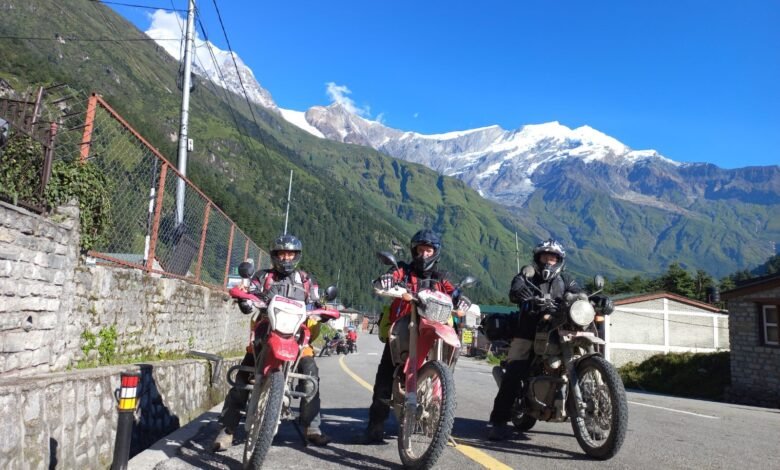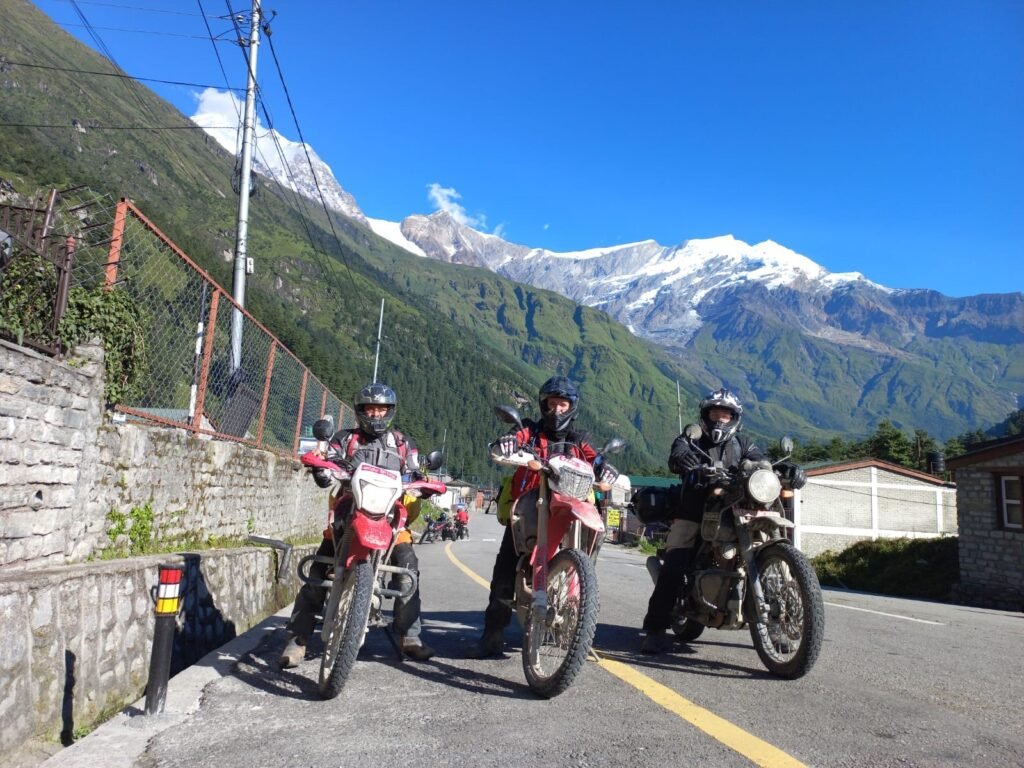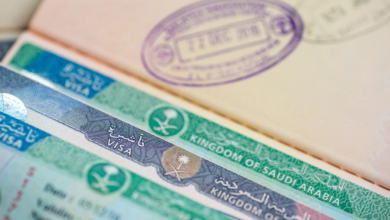Best Time for a Motorbike Tour in Nepal – Weather, Roads, and Tips

Nepal is heaven on earth to the fans of motorbikes who desire adventure and breathtaking landscapes. It is covered with various landscapes that provide an adventurous combination of terrain to the riders, which appeals to the skill and the spirit of adventure.
The Nepal roads are of a variety, such as the rich Terai plains, zigzag hill roads, to the exciting Himalayan high passes. Every ride is unforgettable as every region has its own views and cultural experiences.
The weather conditions in Nepal are seasonal and a real impediment to the roads, affecting the enjoyment as well as the safety. During the Monsoon season, roads may become unsafe due to heavy rain and landslides, while in winter, snow can block high passes.
This guide will assist you in finding out the most favorable months and weather for a motorbike tour in Nepal. It also gives the most crucial hints that can make your trip secure, pleasant, and extremely fulfilling in the company of spectacular scenes.
Overview of Motorbike Touring in Nepal
Touring Nepal on a Motorbike will bring the riders to well-known routes such as Kathmandu- Pokhara, the Mustang region, Manang, Annapurna Loop, and the long East-West highway. Both of them present unique scenery and cultural diversity to ride around on two wheels. Permits are required for restricted regions such as Upper Mustang and Manang.
The road network is smooth, but many still have patches and traffic at low levels, with gravel and rocky tracks at high levels. The altitudes on these routes are an average of 300 meters at the Terai plain, as compared to more than 3,500 meters in the mountain and rocky areas.
The riders also have mixed terrain challenges with sharp bends, narrow mountain passes, and, at times, landslides. Its dust, steep ascents, and declines require skill and good riding ability, as the high-road tracks are extremely arduous and need stamina and concentration.
Royal Enfield motorcycles are most suitable on smooth pavement roads and mixed roads, whereas dirt bikes are more effective on rough and off-road areas. The intermediate and advanced riders will enjoy the best of it because some of the routes are technical, such as tight curves and uneven rocky terrain at a high elevation.

Seasonal Breakdown: When to Ride
a. Spring (March–May)
The spring in Nepal, with the clear skies and colorful rhododendron blooms, provides a colorful background to the riders. The comfort of riding in moderate temperatures is also experienced, particularly on the lower and mid-altitude routes, which improves the entire touring experience.
This is an ideal season to take high altitude paths like Mustang and Manang. Clear weather and melting snow clear mountain roads, providing access to beautiful landscapes and villages.
The preparation of the ride should take into account the dust storms and the high-strength winds in April-May that make the visibility low. During these months, riders need to be very vigilant, particularly on open high elevation routes that are likely to be affected by abrupt weather conditions at any time.
b. Summer/Monsoon (June–August)
Summer/Monsoon seasons in Nepal are characterized by heavy rains, making the trails slippery and the risk of landslides high. Lower Terai routes can flood temporarily during the peak monsoon (July–August). All these circumstances render most of the routes difficult and dangerous to ride on a motorbike, and low traction and visibility require attention.
Riding in the monsoons is not advisable other than in rain-shadow areas like Upper Mustang and Dolpo. These regions are pretty dry because of natural obstacles, which provide a safer way to pass and unusual landscapes, which are not easily reached in other seasons.
Riders going out during the monsoon must have good waterproof clothing to keep them dry and their equipment safe. It is important that the bike is maintained regularly to avoid water damage, particularly by ensuring that the brakes, clutch, and chain are in good shape, especially when the weather is wet.
c. Autumn (September–November)
Another ideal season to motorbike in Nepal is in the fall (September to November), as it is the season when the weather is pleasant and the skies are clear. It is ideal for panoramic mountainous routes as the riders have great visibility. This is the peak tourist season, so expect more traffic on main highways and in Pokhara–Mustang corridors.
Dry roads and a serene environment minimize risks such as mud or floods, providing good, safe rides across varying surfaces. This pleasant weather is a great attraction to riders who seek long-distance rides and Himalayan tough rides.
The season is ideal for both inexperienced and professionals, offering the unsurpassable natural beauty with easy-going riding. It is the right moment to have an adventure through the scenic scenes of Nepal by riding on a motorcycle.
d. Winter (December–February)
Nepal has cold and icy conditions during winter in the high altitude, thus deteriorating mountain passes that will be difficult or unsafe to travel through. Cold weather and snow prevent high-accessibility routes such as Mustang and Manang from being used during this season.
The Terai plains and lower hills have pleasant weather during the winter that provides comfortable temperatures for riding and dry roads. The areas are also good for motorbike tours that focus on cultural attractions as well as wildlife tours without weather extremes. However, morning fog in Terai can affect visibility in December–January.
Winter is the best season to go on short tours around Kathmandu Valley, Chitwan National Park, or Lumbini. The destinations are easily accessible, offer very good cultural experiences and natural beauty, with stable roads that can be used by less experienced riders.
Road and Terrain Conditions
Roads in Nepal, including key routes such as Prithvi (Kathmandu-Pokhara) and Mahendra Highways (East-West Highway), are generally paved but can be congested with traffic and temporarily damaged by landslides and weather conditions. In comparison, rural trails are largely made of gravel or dirt, which requires handling with care.
The highways and main mountain roads are often subject to construction of roads, which may cause alternate routes to be taken or additional time to be spent traveling. Unpredictability in seasons, soil erosion, potholes, broken bridges, and rural roads are generally poorly maintained, so the riders have to be ready to face harsh conditions and inadequate services.
Dirt and gravel surfaces can be slick or dusty, depending on the season, for motorcycles. Riders need to slow down, ride in a stable position, and not make instant braking. The sharp bends of the mountain that may occur on the road should also be approached with appropriate safety measures, which foresee.
A durable motorcycle, like a Royal Enfield or dirt bike, can aid in the control of mixed terrain. Protective gear, as well as ease of control to stay alert to mixed traffic, like animals and pedestrians, will increase road safety both on highways and rural paths throughout Nepal.
Recommended Routes by Season
Autumn is the best time of year for motorbike journeys in Nepal, with the highly frequented Kathmandu–Pokhara–Mustang loop offering fairly consistent weather, highly visible conditions, and stunning views of the Himalayas. The route is culture-enriched and exciting in terms of mountain riding.
During spring, the Kathmandu-Manang or Annapurna mid-hills trails are filled with rhododendrons and mild riding weather. It is a time of year when one can appreciate the beauty of the natural environment and relax in the riding conditions that are usually found in middle altitude trails.
The Terai plains circuit, which consists of Lumbini, Chitwan, and Janakpur, is well explored during winter. The weather is pleasant in these areas with easy roads, making them ideal for short and relaxed motorbike trips.
During the summer monsoon, rain-shadow routes (like Upper Mustang) can also offer a unique riding experience. The area is drier and provides a safer adventure that is scenic, as most of the other areas in Nepal experience heavy rains and slippery paths. For Upper Mustang or Dolpo, special restricted-area permits are mandatory and must be arranged through licensed tour operators.
Conclusion
Spring (March to May) and autumn (September to November) arthe e most favorable times to do a Motorbike tour in Nepal, as they offer stable weather with pleasant temperatures. The summer monsoon is generally hazardous across many of Nepal’s riding routes, although riding in the rain-shadow region of Upper Mustang is quite safe. Winter is appropriate for motorcycle tours in the lower Terai plains.
When planning your ride, it is important to plan responsibly and be aware of weather and safety gear due to considerable landslide and changing terrain risks in Nepal’s diverse landscapes. With reasonable planning and preparation, you can experience a smooth and successful motorbike riding experience year-round.
If you are new to riding in Nepal or would like to have a local motorbike and riding knowledge, you can also join guided tour groups or rent a motorbike from a well-established agency. Guides can support the ride while providing expert local knowledge of the route and local culture, while reducing concerns for logistics.
Source: https://himalayanadventuretreks.com/helicopter-tour-in-nepal/





